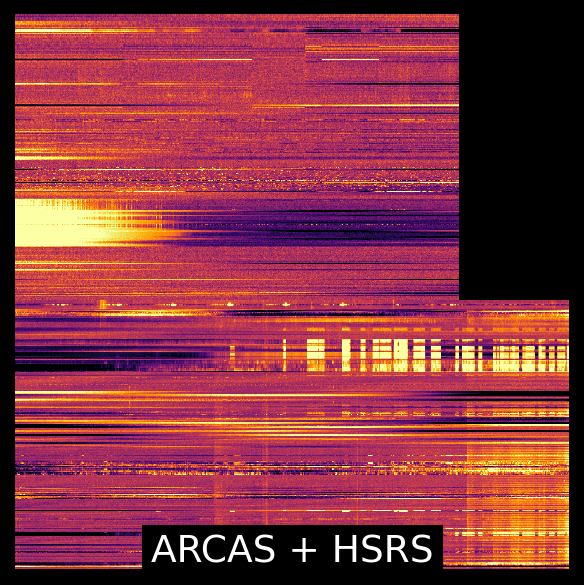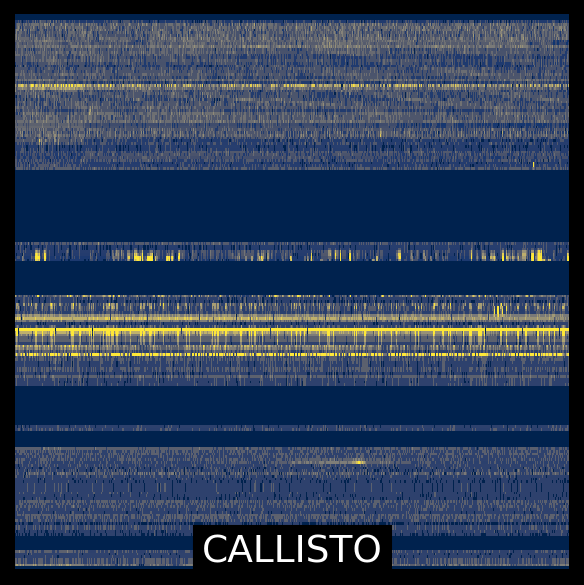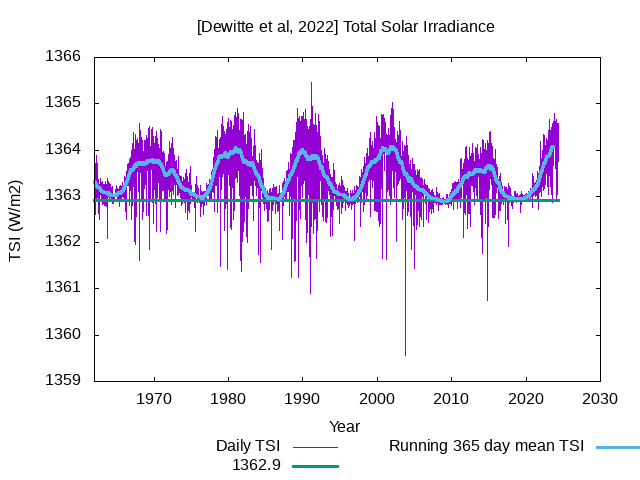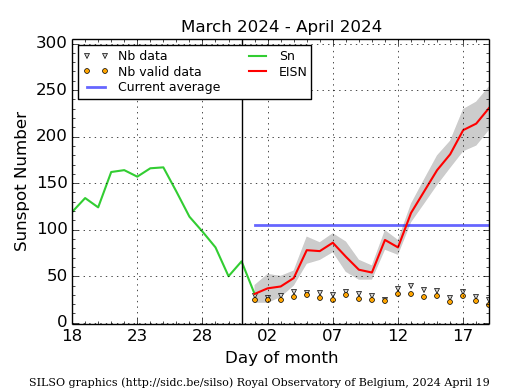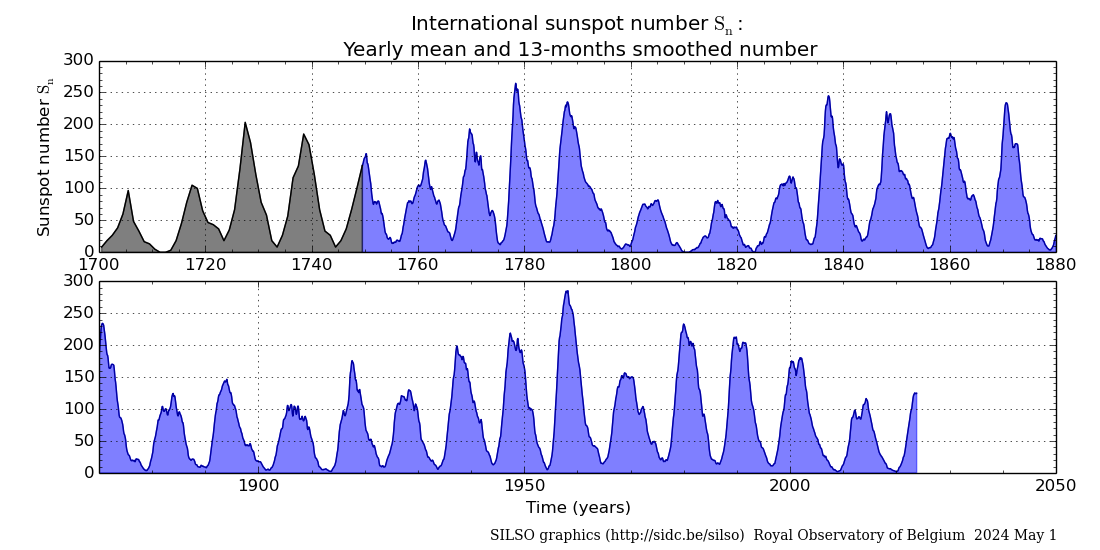The solar flaring activity was at high levels with several M-class flares and an X-class flare during the last 24 hours. The largest reported flare was GOES X4.5 flare, which peaked at 06:35 UTC on May 06, from NOAA AR 3663. During the flare, the source region (AR 3663) of the flare had beta-gamma-delta configuration of its photospheric magnetic field. Both NOAA AR 3663 and AR 3664 produced several M-class flares over the past 24 hours. The solar flaring activity is expected to be at moderate to high levels over the next 24 hours possibly with M-class flares and a chance for isolated X-class flares.
At the time of writing no LASCO C2 and C3 data seems to be available from May 04 to 06. A narrow coronal mass ejection (CME) associated with an X-class flare from NOAA AR 3663 (peak at 06:35 UTC on May 06) was observed in STEREO-A coronograph images. It is predominantly north directed so it will not arrive at Earth. Other eruptions in EUV images and coronal dimmings are seen on SE quadrant of the Sun around 14:20 UT and 17:20 UT on May 05 which may be possibly associated with CMEs. Further analysis will be carried out once the LASCO images are availble.
The greater than 10 MeV GOES proton flux was below the threshold level over the past 24 hours and is expected to remain so for the next 24 hours.
The greater than 2 MeV electron flux, as measured by the GOES-16 satellite, was below the threshold level over the past 24 hours and is expected to remain so in the coming 24 hours. The 24h electron fluence is presently at normal level and is expected to remain so for the next 24 hours.

